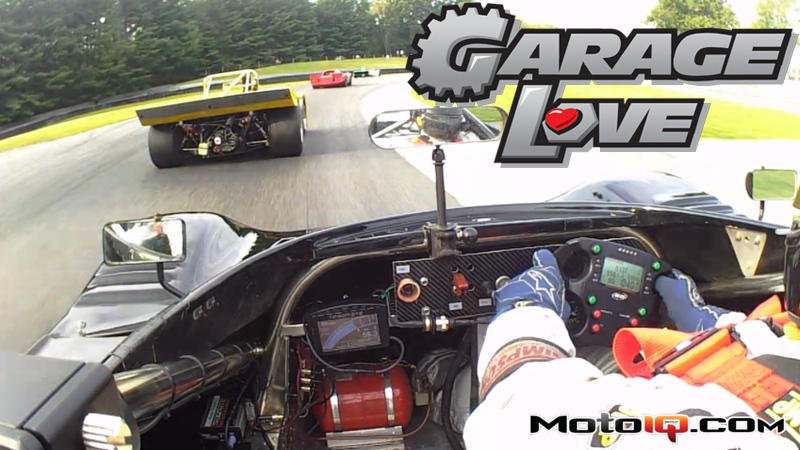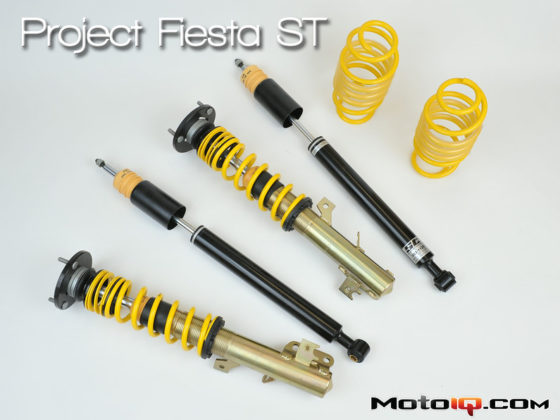Track and Traffic
Can Experience on the Race Track Make You a Safer Driver in Real-World Traffic?
The Tire Rack Street Survival School uses many of the skills and techniques used in autocross to teach new drivers how to properly control their car. The physics of vehicle dynamics, and how they can be applied safely, has made Street Survival the Ivy League of young driver education. The program has made thousands of teens better drivers—and saved more than a few lives.
 Modern traffic can suck—it's made worse by not paying attention and being overly aggressive. Sure, I could weave through there, but ultimately, my racing skills are best used to keep me safe, not get to my destination 25 seconds sooner.
Modern traffic can suck—it's made worse by not paying attention and being overly aggressive. Sure, I could weave through there, but ultimately, my racing skills are best used to keep me safe, not get to my destination 25 seconds sooner. But hardcore car people already knew that. While cool as heck, the premise is old news. For some extra credit, can we move that concept up a grade—could we apply the same concept to racing on the track? Would track events or road racing make you—an adult car enthusiast—a better, safer driver on your daily commute? To get a seasoned perspective, I asked a long time friend (and the driving instructor I had way back at my first racing school) his thoughts on the matter.
Peter Krause has been a race coach for nearly three decades, focusing on strategy as well as driver performance. When Peter changes from his signature tweed sports jacket into an OMP race suit, he makes the metamorphosis from Ben Kenobi into Obi Wan of the club racing world. He’s a master on track and can teach his students—both novice and veteran—a trick or two about any track situation.
 Peter Krause (on left) with one of his (now winning) race students.
Peter Krause (on left) with one of his (now winning) race students. Peter teaches skills that are highly prized on the racetrack such as vision, estimation of closing rates both in front and from behind, recognition of potential threats to safe passage and the confidence in the capability of the vehicle. These all play a part in successful travel on public roads. The best drivers scan for dangers everywhere—they look through the windows of not only the car in front of them but also the car in front of that car. The track day driver often recognizes and deals with surprises, stopped cars and wandering drivers in adjacent lanes with aplomb.
Peter adds, “I rarely get surprised on the road, because many of the skills that I teach to ensure safe passage on the track are etched into my brain. Recognizing cars drifting into my lane before they're a danger, plotting my path around a corner so I don't inadvertently drop a wheel off the edge of the road and looking through the cars in front of me to determine what will influence the car in front of me are all situational awareness tools used to help track day and club racing drivers be safe on the track.”
Drivers with track-day and competition experience are generally driving enthusiasts, avid students of the sport and the discipline. Not so for most street-only drivers. Sometimes the lack of knowledge and confidence is enough to cause a street driver to be dangerously indecisive, causing hazards where none need exist. The startling rise in distracted driving, with entertainment systems, phones and GPS tools vying for a young driver's limited experience has been a major goal of many teen schools, including Street Survival.
Peter continues, “On the track, everyone is on the same page. All traveling in the same direction, no cross streets, nobody talking on the phone, just a high level of concentration and a fair bit of self-preservation going on. On the track, it's an avocation—a wanted, desired recreation. On the street, that's just not the case, except for some professional drivers. But no one is immune. It's easy to drop food or spill a drink and divert your attention from the road, until it's too late. Even pros are capable of that.”
 A view from Peter's Sports2000 cockpit—He's hanging back watching the drama unfold ahead of him before charging.
A view from Peter's Sports2000 cockpit—He's hanging back watching the drama unfold ahead of him before charging. On the track, if drivers can't see around them due to dust, dirt or debris or the conditions are compromised by rain or darkness, they slow down and leave more of a margin. On the street, people often don't respect that conditions can rapidly deteriorate. Again, track drivers tend to have a much higher awareness of the danger and likelihood of getting caught out and surprised, so they cultivate skills and behaviors that make sure they stay safe.




